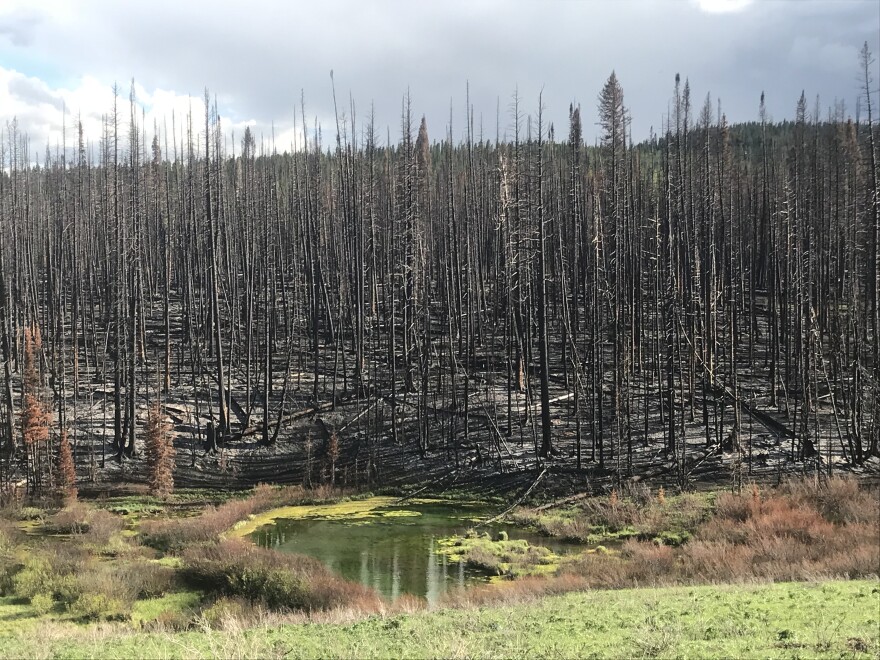Boreal toads were once common in the western part of the United States. Today, the toads, and many other amphibians, are under attack from a deadly skin disease known as chytrid fungus, which limits their ability to obtain oxygen and may lead to cardiac arrest. But somehow toads found in Western Wyoming appear to be fighting back against the disease.

These Western Wyoming Boreal toads look like any other boreal toad. They're brown with a light stripe down their back. They're warty and hop around.
Similar to other boreal toads elsewhere, 50 to 70 percent of the Western Wyoming Boreal toads are infected.
"What factors are causing the toads to be doing well in these streams versus other parts of their range?" asked Gabe Barille, a doctoral student at the University of Wyoming.
He's been studying these toads for about five years.
A few weekends ago, Barille was doing field research with his technician, Matt Webster, in the mountains near Pinedale.
"Blows me away every day. This is our office. It's pretty great," Webster said, looking out onto the valley.
Similar to a doctor's checkup, the researchers weighed, measured, and took the temperature of each toad. The temperature is important because the researchers said the chytrid fungus grows in a specific temperature range.
"We're monitoring where the toad's body temperature is and where toad digestion and immune function is the highest," Barille said, "If they can get their body temperature up to that level, they may be able to fight off the infection."
They also swabbed the toads with a long Q-tip, which will be sent to a lab to be tested for the presence of the fugus.
One thing Barille looks into is when and where the fungus tends to be present, and if there have been any recent disturbances in the area that could affect its growth, such as wildfire.
"If a wildfire warms up the environment in different ways, that could potentially have a positive effect on how they're digesting food and growing, and also their immune functions," he said, adding that temperature and water relationships are incredibly important for the toads.
Another data point he looks at is the proportion of infected toads to healthy toads. There have been toads who have had the fungus but then gotten rid of it. These cases are particularly interesting, and may shed some light onto the ways the fungus can be effectively defended against.

While we were driving between sites in the mountains by Pinedale, Barille explained what management decisions can be made with this information.
"If you can sort of determine whether amphibians have the ability to seek out these warm microclimates, and then maybe [do] a simpler, smaller scale habitat manipulation, just to create more of those types of environments that they can go and bask and raise their body temperature or dry out the fungus, might be a nice effective yet feasible management tactic to help infected individuals get healthy again," Barille said.
Counting tadpoles and newly emerged toads, which they call toadlets, is another part of the study. They moved carefully through the water at each pond, and used a little silver clicker to keep track.
"So we're assessing tadpole growth, development, abundance through time, and trying to relate that to environmental conditions at the pond," Barille said. "So pond size, hydroperiods, number of aquatic predators at the pond, water chemistry, that kind of stuff."
Those numbers are also used to calculate data about life stages, survival rates, and future viability, which are important to know when determining the disease's effects.

The Barille and Webster are planning on one more field season to gather more data before final analysis with the obvious goal of being able to determine what makes the toads able to fight off the fungus.
"It's tough. It's a big puzzle. Unfortunately, you can't do a puzzle all at once. You have to do little pieces," Barille said.
For him, this research is not only important because of the global conservation implications, but also because of a simple respect for living things.









